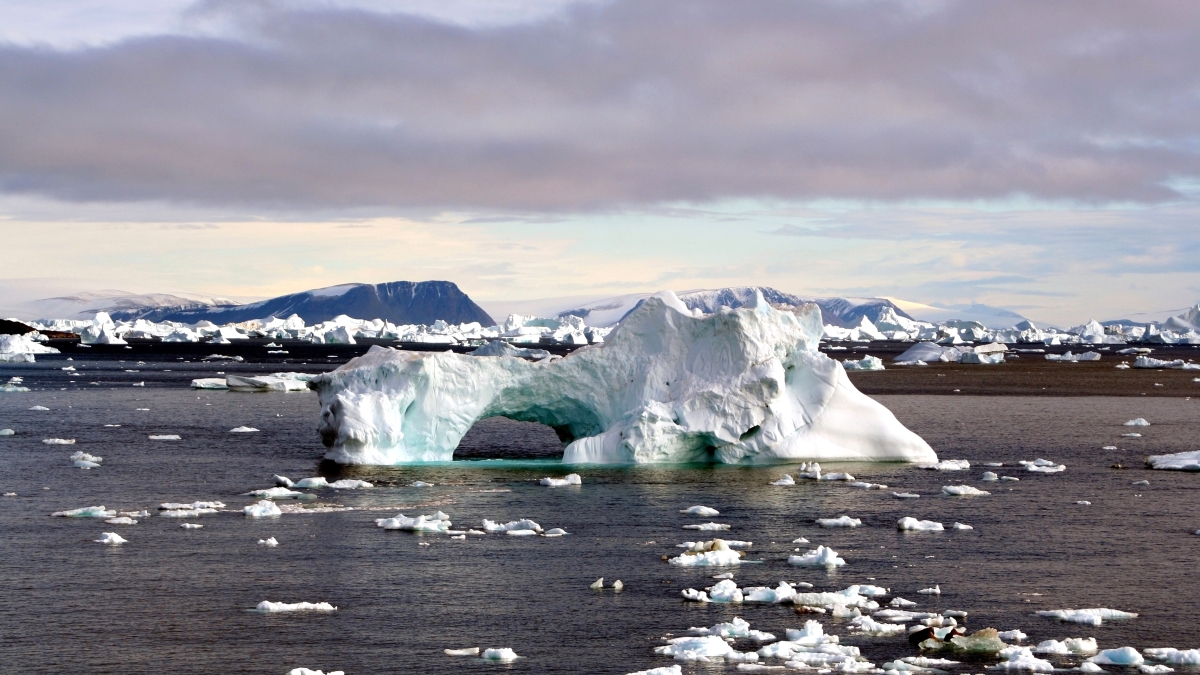Leaders and representatives from nearly 200 countries, including President Barack Obama, are gathering in Paris starting Monday to forge an agreement to reduce carbon emissions and stave off rising global temperatures, while squabbling amongst themselves over how to split the tab.
On the other side of the pond, Republican leaders in Congress are vowing to do everything they can, including a government shutdown, to stop just such an agreement. They dispute many conclusions of climate science and warn against subjugating the United States to the UN and handicapping the nation’s energy production.
Some of Arizona State University’s own climate experts are attending the talks in Paris, which run from Nov. 30 through Dec. 11. Sonja Klinsky (left), assistant professor in the School of Sustainability and a senior sustainability scientist in the Julie Ann Wrigley Global Institute of Sustainability, sheds some light on the latest conflict surrounding climate change and whether nations can realistically hit emission targets.
Question: Within the United States, there is disagreement over the cause of climate change and even greater disagreement about our global responsibility to address it. Given that internal dissent, how can we expect to sign on to a new international agreement?
Answer: When climate change was first discussed in the United States it was a nonpartisan issue. When we look at some of the climate impacts that the United States is likely to experience, it also reminds us that this is still a nonpartisan issue. For example, we have some very vulnerable places in the U.S. including parts of Florida, Alaska, the Southwest and the Eastern seaboard. This includes cities like New York and Miami in which we have very large populations. At some point, we are going to have to deal with these challenges, and we will need to work together in order to do this.
The reality is that good public policy can help us design a transition that facilitates renewable-energy development, research and innovation, and things like public transit and green buildings. Change can be intimidating and there will be some costs, but they can be managed with good policy design.
We know from many studies as well as human experience that many of us are procrastinators. However, climate action will get more expensive the longer we put it off.
Q: Because of differing timelines of industrial development among the countries, the summit is a little like a bunch of friends who went to a bar to drink, but they showed up at different times. Some have been hoisting beers for three hours, and others recently showed up and haven’t finished their first. Now the tab has arrived. How do you settle the arguments among countries that want to pay differing amounts?
A: One of the most promising elements of the Paris agreement is that for the first time, all countries will be contributing to climate action. However, these actions will not all be identical as each country has a unique situation. For example, the U.S., Mexico, Bangladesh and Japan all have different opportunities and resources for taking climate action and face different barriers. What will work in one country will not necessarily work in another.
The good news is that emissions can be reduced in many ways, some of which may not actually cost very much. This means that there are genuine opportunities for all countries to take actions that make sense in their own domestic circumstances. The bad news is that it is hard to compare these actions because they are all so different. Figuring this out is a core challenge for the Paris negotiations. This conversation is known in UN jargon as “differentiation” and will be a major topic of consideration this year, and for the next many years as countries continue to try to take more ambitious actions.
Q: China emits the most CO2. Can we realistically expect it to make the changes necessary to affect their emissions levels?
A: If you look only at how many emissions an entire country produces, China now emits the most. However, it is also the most populous country in the world. Currently each American emits on average a little more than 20 tons of CO2 per year. The average person in China emits only about 7 tons, and this is a very recent development. Because emissions stay in the atmosphere for about 200 years, we also have to deal with all of the emissions that have accumulated. When we count all of these emissions, the U.S. is absolutely the single largest emitter of any country.
Interestingly, even though per person they have emitted much less than we have in the U.S., they are already doing a great deal about greenhouse gas emissions. For example, China has twice as many emissions covered in carbon pricing systems than we do in the U.S. They also have the fastest-growing rates of solar-power development anywhere in the world. China is now the world’s largest solar-panel market. Some analysts estimate that more than 25 percent of all solar installations in 2015 will have occurred in China. China is already doing a great deal.
One thing that is particularly important to note is that China also has much less money per person than we do in the U.S. The per capita income there is about $13,000, while here it is about $55,000. This makes their achievements particularly impressive.
Q: What will it take to achieve success at this year’s climate summit in Paris, and how can we avoid the failures of the 2009 summit in Copenhagen?
A: We need to be very clear about what “success” is at these talks. International climate talks are significant because they send a clear signal to all governments, industries and individuals that climate change is an important issue and that there is universal agreement that action needs to be taken. However, the real action that actually reduces emissions and deals with impacts from climate change happens at the city, state and national level.
This means that “success” at Paris will look like a global agreement in which all countries commit to taking some climate action. Most countries have already made some commitments as they have announced them in the lead-up to the negotiations.
Q: The previously agreed-upon limit for temperature increase was set at 2 degrees Celsius. Is this a realistic goal?
A: Currently it is estimated that the pledges that have already come in from countries will not get us all the way to 2 degrees Celsius. This is why a crucial part of the Paris discussions will revolve around designing and initiating a review mechanism that will, over time, increase these pledges.
It is important to remember that for many countries and vulnerable communities — including small-island developing states or Inuit communities in Alaska — 2 degrees of change may already be too much. Similarly, some ecosystems may not be able to survive a rapid 2-degree change. Paris will not get us to 2 degrees, but it is one more step and one more tool that can help get us there.
Q: What are the most important changes we can make in our daily lives to positively impact climate change?
A: Roughly speaking, each of us plays at least three roles in our society.
• First, we are all citizens. Climate change has not always been, and does not need to be, a partisan issue. Climate action is very possible in the United States, and in many ways could improve our position globally in terms of innovation and market share in areas like renewable energy. However, many of the changes we need will require political action, and each of us can inform our elected officials at all levels that this is something we care about.
• Second, we are all part of organizations such as our workplace, our church, our synagogue, our local school board or our broader community. This means that each of us can be part of collective decisions about how we talk about climate change and how we make decisions about corporate purchasing or energy production. For instance, can your workplace or religious organization invest in solar energy? Can it help support employee use of public transit?
• Third, we are all individual consumers. We make decisions about whether to insulate our homes. We can choose to minimize our commute. We can consider eating less meat. We can build a backyard composter. The possibilities for personal changes are almost infinite.
The image at the top of this page is by Brocken Inaglory (Own work) [GFDL or CC BY-SA 3.0], via Wikimedia Commons
More Environment and sustainability

ASU launches groundbreaking partnership to address water insecurity in Arizona
For the past two years, Arizona has contended with record-breaking heat and over 1,000 heat-related deaths in Maricopa County alone. However, the county is just a microcosm of the rest of the…

There's a rattlesnake in your backyard: What do you do?
Editor’s note: This story is featured in the 2024 year in review.A snake slithers onto your back porch one sunny morning.What do you do?Call a relocation expert, grab a shovel and try to…

Pettinger to guide Southwest Sustainability Innovation Engine's sustainable technologies to market
There’s a lot of daylight between coming up with a good idea and turning that idea into something people can use.Katie Pettinger is here to help bridge that considerable gap. As the new chief…
